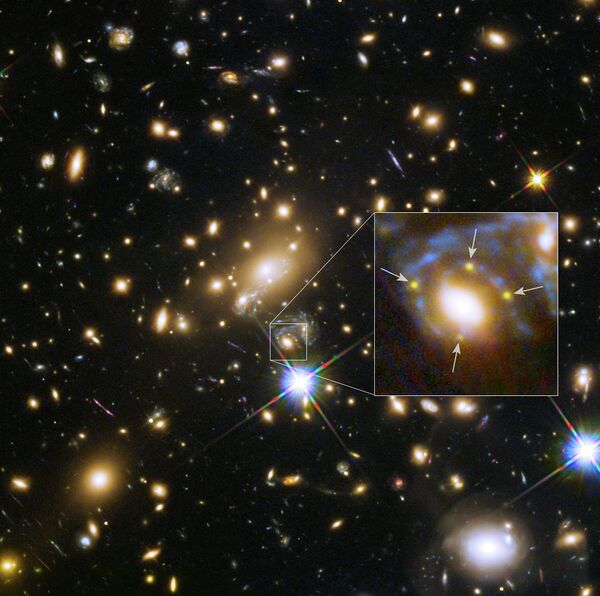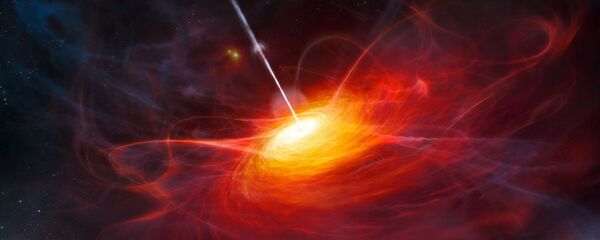In what appears to be a massive elliptical galaxy within a cluster known as MACS J1149+2223, whose light takes more than five billion years to reach us on Earth, scientists were able to see for the first time a distant super nova creating an image that looks like four exploding stars.

Due a light-bending phenomenon known as gravitational lensing, the light from the supernova is being altered by dark matter into a super-rare cross formation known as the Einstein Cross.

While astronomers have discovered many multiple images of galaxies and quasars, they have never seen a galaxy cluster close enough to see “multiple” explosions like this.
“It really threw me for a loop when I spotted the four images surrounding the galaxy — it was a complete surprise,” said Patrick Kelly of the University of California Berkeley, a member of the Grism Lens Amplified Survey from Space (GLASS) collaboration and lead author on a paper detailing the supernova discover, which will be published in the journal Science.
“The supernova appears about 20 times brighter than its natural brightness,” said the paper’s co-author Jens Hjorth from the Dark Cosmology Centre in Denmark. “This is due to the combined effects of two overlapping lenses. The massive galaxy cluster focuses the supernova light along at least three separate paths, and then when one of those light paths happens to be precisely aligned with a single elliptical galaxy within the cluster, a secondary lensing effect occurs.”
The discovery may lead scientists to alter their estimates of how much dark matter, which can only be detected by its gravitational pull, is involved in the lensing galaxy and cluster.
As the four points of light fade, scientists will be able to observe the supernova explosion again. The images of the supernova do not arrive at Earth at the same time because for each image produced there is a different route with a different layout of matter that contains both visible and dark matter.




